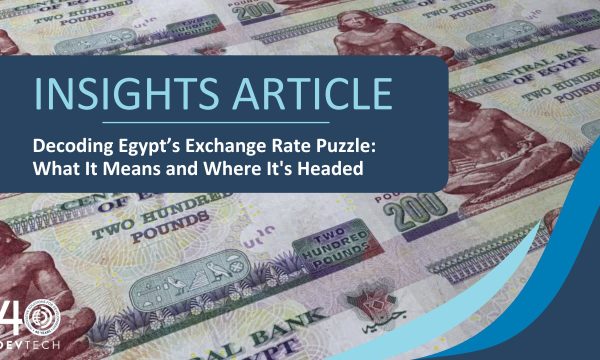ForeignAssistance.gov is managed by the DevTech team through the Analytics, Data, Visualization, and Information Services (ADVISE) contract, also known as USAID Data Services. The site is the central resource for budgetary and financial data from U.S. Government (USG) agencies that provide foreign assistance. USAID Data Services collects data from over 20 USG agencies for publication to ForeignAssistance.gov, with historical data going back to 1946. The website is a useful resource for understanding where and what the USG spends on foreign assistance.
Every time significant events occur overseas, the USAID Data Services team sees an increase in public requests, news citations, and visits to ForeignAssistance.gov. In October and November 2023, during the early days of the Israel-Hamas conflict, the site had over 200,000 page views from across almost 200 countries. There was an average of 23,000 users during these two months, up from an average of 13,000 monthly users the rest of 2023.
What can you learn from the site?
- Compare USG foreign aid spending across countries, sectors, income-groups, and agencies
“What sectors was the U.S. investing in in Sudan during the height of the war in Darfur and how did that level of investment differ from what was received by its neighbors?”
The main landing page of ForeignAssistance.gov—referred to here and on the site as the Dashboard—is interactive and can give a broad, comparative perspective of how the USG is providing foreign aid across countries, sectors, income-groups, and agencies.
- Explore USG foreign aid spending trends over time
“How has U.S. engagement in Ukraine, Vietnam, or Afghanistan evolved over the years?”
Like the Home Page dashboard, the Trends page is very interactive. Users can choose to focus on viewing foreign assistance over time while focusing on a particular country or USG agency going back to 1946 and the post-World War II era. Hit the ‘play’ button in the top right corner to see history through the lens of US foreign assistance.

- Investigate USG foreign aid spending as it relates to a specific country
“How has the U.S. provided foreign assistance to the West Bank and Gaza over time, and how does that assistance differ from Israel, Jordan, or Egypt?”
In an average month, over half of the visits to ForeignAssistance.gov are to the By Country page. This page is best used to look at assistance to one particular country across agencies, sectors, and over time (since 2001).

- Get a sense of how foreign assistance spending by a specific USG agency has evolved over time
“I’m a returned Peace Corps Volunteer and want to see how the agency’s investment in different regions or countries has changed since my tour.”
The By Agency page focuses on a particular agency’s role in foreign assistance. It includes information on the top countries and regions by Agency funding levels, top funding accounts for an Agency’s assistance, and top foreign assistance partners.

- Analyze the USG’s foreign assistance data on a more granular level
“I am a researcher interested in USG foreign assistance. Where can I find data to conduct my own analysis?”
The Data page contains both prepared data download files and a customizable data query function. You can download the entire ForeignAssistance.gov dataset, budget datasets, or summary files of funding by Country, Managing Agency, USG Sector, Funding Agency, and International Sectors. Because the full ForeignAssistance.gov dataset is very large, we recommend using the Query function to narrow your search and reduce the quantity of data you are downloading. Datasets can be downloaded as a csv file of your query results.

- Find out how the USG’s foreign assistance spending compares to that of other countries
“Which donors, other than the U.S., provided assistance to Ethiopia in 2016?”
The Development Cooperation Landscape—found by selecting Beyond USG—provides country-level information about development cooperation outside of the USG, as reported to the International Aid Transparency Initiative (IATI). Once a specific country has been selected via the dropdown menu, this page shows the top three IATI donors by organization type—including bilateral governments, international NGOs, multilateral institutions, and foundations. You can also see mapped subnational geographic information that has been published by IATI, including by sector, organization type, and implementing organization.

Understanding the data
Foreign assistance can get complicated. The methodology, frequently asked questions, and glossary of terms—all on the About page—can help you navigate the site and better understand the data. Check the Status page for data completeness of the years and agencies you may have filtered for. Familiarizing yourself with these pages is important to understand the context and limits of the data before drawing any conclusions about what you find on the site.
ForeignAssistance.gov contains the most recent publicly available foreign assistance data from USG reporting agencies, but it still has limitations. Data were less robust prior to 2001, and although disaggregated data are available by funding agency, assistance category, year, country, and region, these data will have much less detail than those from 2001-present.
Interested in learning more about the USG’s foreign assistance efforts?
If you are particularly interested in the outcomes and results of development projects rather than (or in addition to) USG spending, Devtech’s team at USAID Data Services maintains helpful resources like the Evaluations at USAID Dashboard and the Development Experience Clearinghouse (DEC), a repository of aid records spanning over 50 years. The team is also responsible for the International Development and Economic Analysis (IDEA) site, where users can explore country-level development data from over 200 sources.








